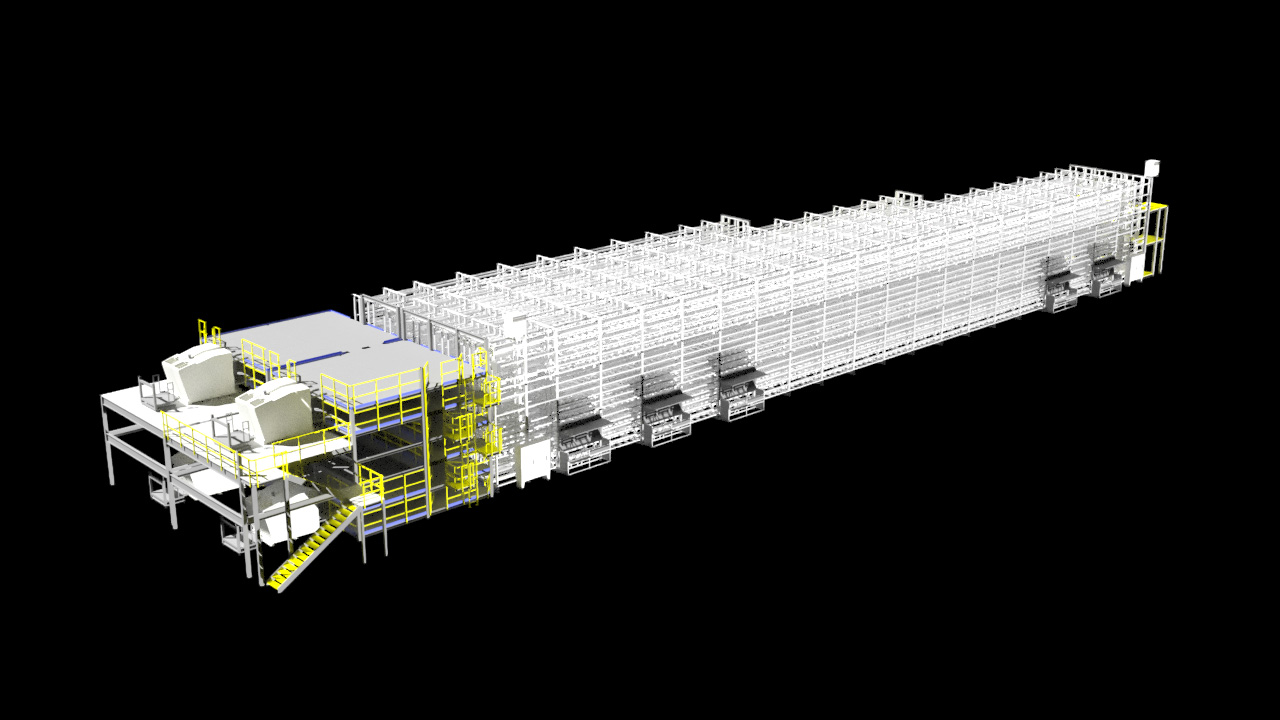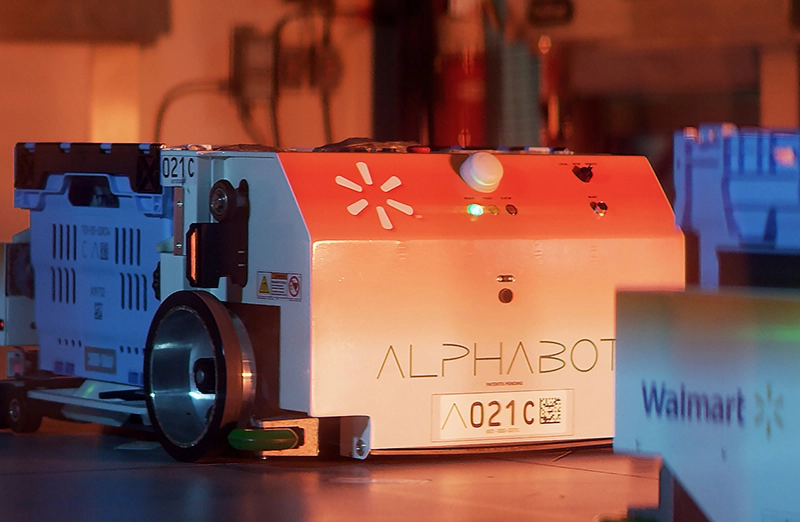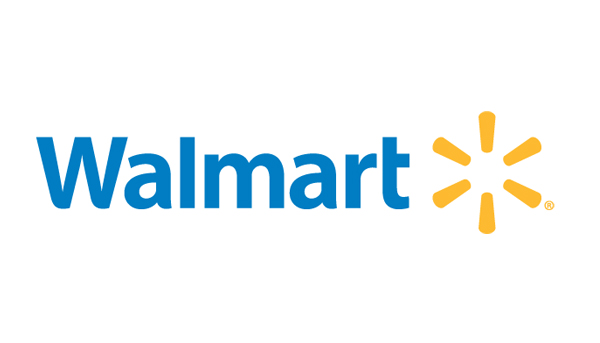Walmart Micro Fulfillment Center
The Alphabot® micro-fulfillment center has been in full operation at a Walmart Supercenter #2142 in Salem, New Hampshire since January 2020. The article below was written by Walmart to describe the first deployment of the Alphabot System.
How Walmart’s Alphabot® is Helping to Revolutionize Online Grocery Pickup and Delivery
In Salem, New Hampshire, a Walmart supercenter is rolling into the future. Alphabot, a first-of-its-kind piece of tech, is now fully operational and working with associates. Its goal? To revolutionize the online grocery pickup and delivery process for associates and customers.

Developed specially for Walmart by startup Alert Innovation, Alphabot helps to enable quicker, more efficient order picking. The system operates inside a 20,000-square-foot warehouse-style space, using autonomous carts to retrieve ambient, refrigerated and frozen items ordered for online grocery. After it retrieves them, Alphabot delivers the products to a workstation, where a Walmart associate checks, bags and delivers the final order.
As the pickup and delivery process works today, associates select items from the sales floor for customers, package them and then deliver them. While associates will continue to pick produce and other fresh items by hand, Alphabot will help make the retrieval process for all other items easier and faster.
A senior manager of pickup automation and digital operations for Walmart U.S. He believes Alphabot could fundamentally change Walmart’s online grocery operations.
“By assembling and delivering orders to associates, Alphabot is streamlining the order process, allowing associates to do their jobs with greater speed and efficiency,” the senior manager said. “Ultimately, this will lower dispense times, increase accuracy and improve the entirety of online grocery. And it will help free associates to focus on service and selling, while the technology handles the more mundane, repeatable tasks.”
In short, Alphabot is another novel entry in Walmart’s ever-expanding efforts to utilize intelligent, game-changing technology that helps both customers and associates.
“This is going to be a transformative impact to Walmart’s supply chain,” the senior manager said. “Alphabot is what we think of as micro-fulfillment – an inventive merger of e-commerce and brick and mortar methods.”
As the grocery pickup system operates now, there are a few extra steps involved for associates. But the senior manager believes the technology will change that.

"With Alphabot, our associates should be able to put even more focus on helping the customer."
Senior manager of pickup automation and digital operations for Walmart U.S.
But the benefits go beyond associates who work with Alphabot every day, extending to shoppers in more ways than one. By increasing fulfillment speeds, this technology can create more convenience for customers, allowing them to place orders closer to pickup time, and reducing wait time when picking up an order.
The system’s fully autonomous bots operate on three axes of motion, constituting a more flexible system than is typically found in traditional fulfillment centers and warehouses. Because the carts that carry items move both horizontally and vertically without any lifts or conveyors, there are fewer space constraints to consider, which should make adoption of the system easier across stores.
Real-time data sharing is also a benefit. Because Alphabot continually shares order information, the system will learn – and as it does, stocking will get more intelligent. Adoption of this new system across stores can lead to a more seamless grocery pickup and delivery experience, making substitutions easier to anticipate and fill.
“We never want to be in a position to tell an online grocery customer they can’t have an item,” the senior manager said. “We’ll be able to look at datasets and fairly say ‘these two brands of pasta are typically bought together,’ or ‘here’s an item a consumer buys often,’ and use that information to make more informed substitutions.”
Alphabot has been operating at its pilot location in Salem since mid-2019. The store will continue to serve as Alphabot’s home while the process is studied, refined and perfected. After collecting associate and customer feedback, next steps for a broader Alphabot rollout will be assessed. Until then, the system will continue to assist associates in Salem as they usher in a new era of productivity and service that could shape the future of modern retail.
The article above was originally published in January 2020 on the Walmart corporate website.
Project Description
Alert Innovation signed a Master Joint Development Agreement with Walmart in 2016 to develop a micro-fulfillment center technology platform designed from the ground up for the exacting needs of grocery eCommerce. Commissioned in March of 2019 as a proof-of-concept pilot system, the Alphabot System is now in full operation.
Project Details:
- Alphabot micro-fulfillment center with a 9,300-sf system footprint inside a 20,000-sf building addition.
- 24’ high (Alphabot® Systems can be built to as high as 48’ to utilize all available space in a facility).
- 15,500 tote positions to hold inventory, orders picked on store floor, and completed orders. Totes are further divided into different size sub-totes to increase the number of SKUs that can be stored in each inventory tote.
- 4 dynamic picking workstations stacked vertically to save floor space.
- 9 static induction/dispense workstations.
- 5 aisles (3 ambient, 2 chill, 1 frozen).

Alert Innovation and Walmart
Walmart, widely admired for its operational skills and online grocery pickup expertise, has deployed two Alphabot Systems – the Automated Picking, Storage and Dispense system in Salem, New Hampshire and an Automated Storage and Dispense system installed and scheduled to go operational in Rogers, Arkansas. Walmart has publicly announced two additional deployments of Alphabot.
On November 9, 2022 Alert Innovation was acquired by Walmart. Alert Innovation continues to operate under the Alert Innovation brand based in the Boston area.